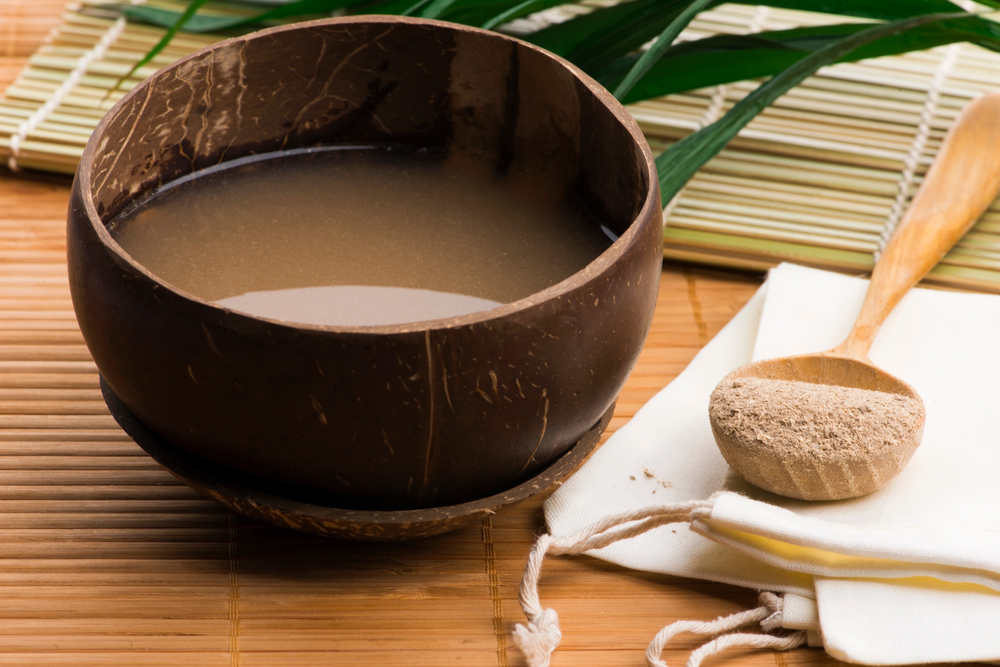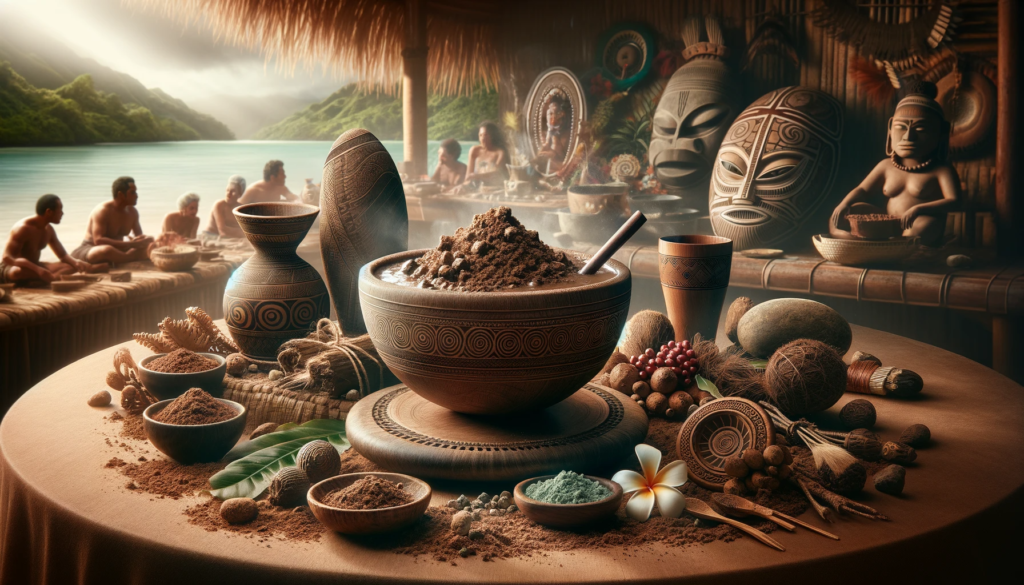Introduction to Kava
The Cultural and Historical Significance of Kava in Pacific Societies
Tracing its roots back thousands of years, Kava has been a cornerstone in many Pacific societies’ cultural and historical landscape. It’s more than just a plant or beverage; it symbolizes communal unity, a medium for spiritual communication, and a fixture in social functions. From the Fijian islands to the archipelagos of Vanuatu, Kava ceremonies have marked significant events such as peace treaties, royal affairs, and milestones within communities. The traditional knowledge surrounding Kava, intertwined with legends and myths, reflects Pacific peoples’ deep connection with this revered plant. It’s been passed through generations as an heirloom of custom, permeating through the Pacific cultural identity.
What is Kava?
Understanding Kava’s Origins and Components
Kava, known scientifically as ‘Piper methysticum’, is a crop indigenous to the western Pacific regions. Revered for its psychoactive roots, the Kava plant embodies a rich tradition in Pacific Island societies. The roots comprise kavalactones, the active ingredients responsible for its sedative, anxiolytic, and muscle-relaxing effects. Over 18 different types of kavalactones have been identified, each contributing to the Kava beverage’s intricate flavor and potency profile. This complexity has led to a varied classification system based upon the plant’s chemotype and cultivation attributes, distinguishing Kava varieties across different islands and shaping the unique characteristics associated with each region’s preparation.

Traditional Preparation of Kava
The Ritualistic Process of Preparing Kava
The preparation of Kava is a ceremonial affair, steeped in tradition and conducted with great reverence. The process often begins with a selection of noble Kava roots, which seasoned cultivators and elders identify. These roots are then meticulously cleaned and chewed by designated individuals, an act believed to bestow a spiritual connection to those partaking in the ceremony. The masticated roots are then mixed with water and strained through fibers such as coconut husk. The resulting concoction is a potent Kava brew, its qualities influencing the collective experience. Beyond creating a physical beverage, this ritualistic process is a form of social communion, uniting participants in a shared spiritual and cultural bond.
Techniques and Utensils Used in Kava Preparation
Traditional Kava preparation is an art form that utilizes specific techniques and utensils. The Kava bowl, called a ‘tanoa’, is a central piece, often intricately carved from a single piece of wood, symbolizing the community coming together. Straining implements, traditionally made from natural materials like coconut fibers or hibiscus bark, remove the coarse fibers to produce a smooth beverage. Modern appliances like blenders and muslin cloth in contemporary preparation signify an adaptation of tradition to current times, allowing for a more accessible and efficient process while retaining the essence of the ceremonial practices. The role of the Kava master, or ‘makas’, remains essential in overseeing the preparation and ensuring the integrity of the traditional methods is preserved.
The Ceremonial Use of Kava
Kava in Cultural Rituals and Ceremonies
Kava’s significance extends far beyond its consumption as a beverage—it’s an integral element of cultural rituals and ceremonies across Pacific societies. Its use ranges from solemn rites to welcoming honored guests, and to smoothening discussions among tribal leaders. In these settings, Kava acts as a conduit for respect and goodwill, and drinking it is often accompanied by formal protocols dictating order and speech. The ceremony often begins with the highest-ranking individual followed by others, reinforcing social hierarchies and community cohesion. Kava ceremonies are preserved as a living tradition embodying the ancient values of respect, community, and spirituality.
The Social and Communal Aspects of Kava Drinking
The act of Kava drinking is imbued with social and communal significance, fostering camaraderie and social engagement. It provides a setting where individuals can unwind and engage in storytelling, song, and dialogue in a tranquil environment—enhanced by Kava’s calming effects. Traditionally, Kava circles consist of participants seated around the ‘tanoa’, symbolizing equality and unity. These gatherings are instrumental in maintaining social bonds and reinforcing cultural identity, where sharing a bowl is akin to sharing one’s life with others in the community. The collective experience of Kava drinking continues to be a vital practice in Pacific islands, intricately woven into the fabric of social life.

The Effects and Experiences of Kava
Understanding the Physical and Psychological Effects of Kava
The allure of Kava lies not only in its cultural significance but also in its distinctive physiological and psychological effects. While typically non-alcoholic, Kava induces a state of mental clarity, relaxation, and mild euphoria attributed to its kavalactones. Unlike alcoholic beverages, it does not impair cognitive abilities, allowing drinkers to remain engaged and reflective. Physically, it can induce numbing of the tongue and relaxation of the body, relieving tension and stress. These effects can facilitate a constructive social atmosphere where participants are more open and communicative. It’s the combination of these effects that make the Kava experience uniquely profound, promoting both personal tranquility and social harmony.
Kava in Contemporary Culture
Modern Adaptations and the Global Spread of Kava Culture
The wave of globalization has carried Kava far from its Pacific island origins, introducing it to a broader audience. Amidst the bustle of modern life, Kava bars have emerged in urban environments, providing a contemporary space for relaxation and social interaction. This trend reflects a growing curiosity and appreciation for Kava and an alternative to alcohol-centric social settings. The adoption of Kava by a global audience has also introduced new forms and practices, such as flavored Kava drinks and instant Kava powder. While offering convenience and variety, these modern adaptations also raise questions about preservation and respect for traditional Kava culture in a commercial context.
Balancing Tradition with Modern Consumption Practices
As Kava becomes more accessible worldwide through both physical and online markets, there’s an increasing need to balance tradition with modern consumption practices. While Kava offers economic opportunities for Pacific island communities, it’s crucial to ensure that commercialization doesn’t compromise its cultural significance or sustainability. Producers, distributors, and consumers must all play a role in safeguarding traditional practices, supporting ethical sourcing, and fostering cultural education. Respecting the rituals and history behind Kava, even within the context of modern consumption, is essential in preserving the heritage and ensuring that the true essence of Kava is not lost amidst its international journey.
Sustainability and Ethical Considerations in Kava Production
The Importance of Sustainable Practices in Kava Cultivation
Environmental stewardship and ethical considerations are crucial in Kava cultivation, impacting the crop’s quality and the well-being of the communities that grow it. Sustainable Kava farming involves protecting the biodiversity of the Pacific islands, maintaining soil health, and ensuring that Kava farming doesn’t deplete local resources. It also involves supporting fair trade practices, safeguarding farmers’ livelihoods, and providing them with just compensation. Therefore, the global Kava community is responsible for advocating for and supporting ethical Kava production, ensuring that this treasured cultural emblem thrives for future generations without harming the very environment it springs from.
FAQs About Kava
Is Kava Legal to Consume?
Kava’s legal status varies by country due to its psychoactive properties. Kava is legal and categorized as a dietary supplement in the United States. Kava is a traditional part of social and ceremonial life in the Pacific Islands. However, some countries have imposed regulations or bans in the past, largely due to health concerns stemming from inappropriate use or poorly processed Kava products. Individuals should check the most current regulations in their region before purchasing or consuming Kava.
What Are the Effects of Drinking Kava?
Kava is known for producing a calming and relaxing effect. Users often describe a sense of tranquility, well-being, and anxiety reduction. It can induce a mild euphoria or sense of happiness without impairing cognitive functions. The effects are generally subtle and can vary depending on the strain of Kava, the dosage, and individual reactions. However, it does cause mouth-numbing, which is a typical and expected sensation shortly after drinking.
Are There Health Risks Associated With Kava?
When consumed traditionally, Kava is considered safe for most people. Concerns have been raised about liver toxicity, but these are mostly linked to non-traditional forms or misuse, such as combining Kava with alcohol or medications or using poor-quality Kava extracts. Properly sourced Kava, used respectfully in moderation, minimizes health risks. Nevertheless, persons with existing health conditions or those taking medications should consult with a health professional before use.
How Does Kava Differ From Alcoholic Beverages?
Kava and alcohol affect the body differently. While both can promote sociability and relaxation, Kava does not result in the loss of cognitive clarity like alcohol does. Instead, Kava encourages a relaxed but alert state, often enhancing introspection and conversation without causing hangovers or addiction when consumed responsibly. However, it’s essential not to mix the two, as they can potentiate each other’s effects, increasing the risk of adverse reactions.
Can Kava Be Consumed Daily?
Traditionally in Pacific cultures, Kava is often consumed daily as a part of social rituals. When consumed in moderate amounts, it’s generally considered safe for regular use. However, chronic heavy consumption has been associated with health issues, including a skin condition known as dermopathy and possible liver health concerns. As with any substance, moderation is key, and it is recommended to take breaks from daily Kava use to minimize potential risks.
Learn about indigenous ingredients in Oceania and their vital role in traditional and modern cooking across the Pacific islands.
